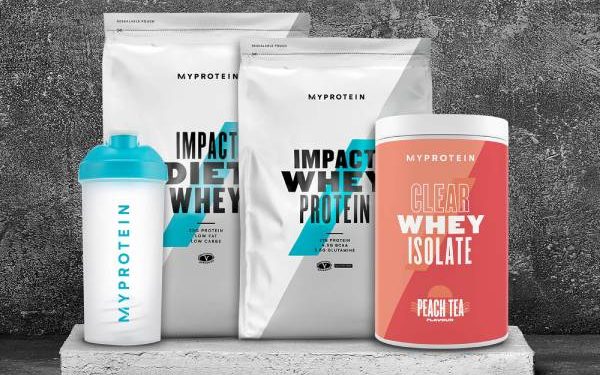Volunteering for the Royal Navy as a Rating, an Officer, or as a Diver is a courageous decision. It requires a level of mental and physical endurance that most average individuals cannot even begin to fathom.
Preparing for a career of uniformed service is just as much of a daily grind as actually serving within the Royal Navy.
During the application process, you should expect to undergo a series of physical and mental tests that will determine if you are qualified for life in the Royal Navy.
The first of these tests is the Royal Navy Pre Joining Fitness Test or PJFT, which evaluates your physical capabilities as well as your mental perseverance.
During this event, you will run 2.4KM on a treadmill and be expected to not only meet the minimum time requirement but display an honest effort to exceed the standards.
Check out the table below, which provides the minimum time, satisfactory time, and competitive time for each gender, age group, and career designation.
Table of Contents
Royal Navy Pre Joining Fitness Test (Rating)
Royal Navy Rating PJFT Treadmill Running Times (Mens) 2.4 km
| Age | Minimum | Satisfactory | Competitive |
| 15-24 | 12:16 | 11:02 | 09:48 |
| 25-29 | 12:42 | 11:25 | 10:09 |
| 30-34 | 13:09 | 11:51 | 10:32 |
| 35-39 | 13:37 | 11:51 | 10:32 |
Royal Navy PJFT Treadmill Running Times (Womens) 2.4 km
| Age | Minimum | Satisfactory | Competitive |
| 15-24 | 14:29 | 13:02 | 11:35 |
| 25-29 | 14:58 | 13:29 | 11:59 |
| 30-34 | 15:29 | 13:57 | 12:24 |
| 35-39 | 16:00 | 12:57 | 12:24 |
Royal Navy Pre Joining Fitness Test (Officer)
Royal Navy Officer PJFT Treadmill Running Times (Mens) 2.4 km
| Age | Minimum | Satisfactory | Competitive |
| 15-24 | 12:16 | 10:02 | 08:55 |
| 25-29 | 12:42 | 10:23 | 09:14 |
| 30-34 | 13:09 | 10:46 | 09:34 |
| 35-39 | 13:37 | 11:51 | 10:32 |
Royal Navy Officer PJFT Treadmill Running Times(Womens) 2.4 km
| Age | Competitive | Satisfactory | Minimum |
| 15-24 | 10:32 | 11:51 | 14:29 |
| 25-29 | 10:53 | 12:15 | 14:58 |
| 30-34 | 11:16 | 12:40 | 15:29 |
| 35-39 | 11:24 | 12:57 | 16:00 |
Royal Navy Pre Joining Fitness Test (Diver)
Royal Navy Officer PJFT Treadmill Running Times 2.4 km
| Age | Men | Women |
| All Ages | 10:30 | 10:30 |
Diver (Men and Women)
All men and women applying to be Royal Navy Mine Clearance Divers must pass the PJFT within 10:30s to be considered for the position.
Developing a Royal Navy fitness guide to passing the PJFT may seem simple: run a lot. But if you hope to achieve the absolute best score possible on throughout the screening process you need to do much more than just log miles on the treadmill or track.
The PJFT should be taken very seriously as it will challenge even the most elite athletes and acts as your first impression on a long list of requirements to be selected to join the Royal Navy.
Aiming for the fastest time possible should always be your top priority, and the 3-Month training program (see below) will help you achieve your dreams of being selected as one of the Royal Navy’s finest.
You can check out the Royal Navy’s recruitment process in more detail here
Our Approach To Training. Phase 1: Foundation (Weeks 1-6)
In Phase 1 of this program, the goal is to build a foundation and prime your body, especially your lower body and lungs, for the following weeks.
Before you do any training, you need to conduct a mock PJFT. Before you start Week 1 of this training program, block off an hour or so to run 2.4KM on a treadmill.
Allow yourself plenty of time to warm-up stretch before stepping on the treadmill and do your best to ensure that your surroundings, what you’re wearing, and any other contributing factors are as identical to what you’ll experience on test day.
Weeks 1-3
- Monday: 3-miles at 80% of maximum effort
- Tuesday: Active Recovery – Yoga, hiking, swimming, or other low impact activity
- Wednesday: 3-miles at 80% of maximum effort
- Thursday: Active Recover – Yoga, hiking, swimming, or other low impact activity
- Friday: 3-miles at 80% of maximum effort
- Saturday: Rest
- Sunday: Rest
Weeks 4-6
- Monday: 4-miles at 80% of maximum effort
- Tuesday: Active Recover – Yoga, hiking, swimming, or other low impact activity
- Wednesday: 4-miles at 80% of maximum effort
- Thursday: Active Recover – Yoga, hiking, swimming, or other low impact activity
- Friday: 4-miles at 80% of maximum effort
- Saturday: Rest
- Sunday: Rest
Our Approach To Training. Phase 2: Speed (Weeks 7-10)
Now that you have established a strong foundation of conditioning and your legs and feet are acclimated to the constant pounding associated with running, you can start to focus on your speed.
2.4KM is one of the most challenging distances to pace because it falls between short-distance running and sprinting.
Therefore, Phase 2 focuses on building the speed needed to maximize the PJFT while using distance runs to maintain your stamina.
Weeks 7-10
- Monday: 4x800m
- Tuesday: 3-miles at 90% of maximum effort
- Wednesday: Fartlek Runs (Source)
- Thursday: 3-miles at 90% of maximum effort
- Friday: 8x400m
- Saturday: Active Recover – Yoga, hiking, swimming, or other low impact activity
- Sunday: Rest
Our Approach To Training. Phase 3: Peak (Weeks 11-12)
You’ve put in ten weeks of grueling training, and now it’s time to ease your foot off the pedal, but don’t take it off entirely just yet. In these last couple of weeks of training, we want to keep the body moving.
Still, using more manageable distances and a lower intensity level, we want to give the body a chance to heal any nagging injuries and flush out any muscle soreness before taking the PJFT.
- Monday: 2-3 mile run at a conversational pace
- Tuesday: Active Recover – Yoga, hiking, swimming, or other low impact activity
- Wednesday: 2-3 mile run at a conversational pace
- Thursday: Active Recover – Yoga, hiking, swimming, or other low impact activity
- Friday: 2-3 mile run at a conversational pace
- Saturday: Active Recover – Yoga, hiking, swimming, or other low impact activity
- Sunday: Rest
Supplementation and Recovery: Our Recommendations

A solid strength and conditioning program, regardless of the objective or sport, is never complete unless it carefully incorporates methods to help the athlete properly recover from strenuous training sessions consistently.
The days are labeled “Recovery” and not “Rest” because they are not days set aside for you to sit on the couch all day drinking soda, eating chips, and binge-watching Netflix.
These recovery days are great for light stretching, properly refueling, getting bodywork done such as massages and chiropractor visits, and just allowing your mind to decompress before the next week of rigorous training sessions.
Best Recovery Methods for Runners:
- Deep Tissue/Sports Massage
- A massage gun for specific tight areas
- Foam rolling specific tight areas
- Compression Leggings and Socks
- 8-9 hours of sleep every night
Ice baths are not necessarily recommended because they’re not significantly better than regular forms of active recovery.
Besides using these tactics to help your body recover, you should also consider supplementing your diet with essential vitamins and minerals that will keep your body functioning at peak performance throughout the 3-month training program.
These supplements aid with sleep, bone strength, and joint health.
Best Supplements for Runners:
- ZMA
- Vitamin D3, be sure to get your blood levels tested to ensure you’re in the optimal range
- Krill oil, you can read more about it here
If you choose to supplement with protein powders, ensure that they are batch tested and comply with the Royal Navy’s drug testing policies.
Informed-Sport products are screened to be used by athletes and military personnel.


